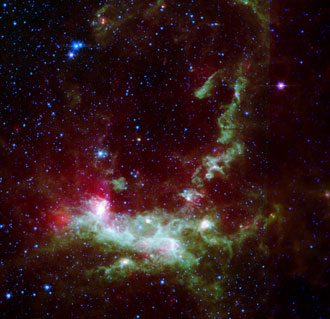Earth could be right in firing line when dying star eventually explodes
 Canberra, March 3 : A new study has indicated that Earth could face a burst of gamma-ray radiation from a dying star located in the constellation Sagittarius, any time between now and the next couple of hundred thousand years.
Canberra, March 3 : A new study has indicated that Earth could face a burst of gamma-ray radiation from a dying star located in the constellation Sagittarius, any time between now and the next couple of hundred thousand years.
University of Sydney astronomer Peter Tuthill first discovered the star in a rotating pinwheel system known as WR104, eight years ago.
According to a report in The Australian, this system contains a Wolf-Rayet star, which is the last stop in a star's life before it explodes in a massive supernova.
Earth could be right in the firing line when the star eventually explodes.
"Sometimes, supernovae like the one that will one day destroy WR104 focus their energy into a narrow beam of very destructive gamma-ray radiation along the axis of the system,'' said Dr Tuthill. "If such a gamma-ray burst happens, we really do not want Earth to be in the way,'' he added.
WR104 is about 8,000 light years away from Earth, which is right down the street in galactic terms and according to Dr Tuthill, there is evidence that Earth may have been hit by one of these bursts before.
"Scientists have speculated that, eons ago, a gamma-ray burst from a distant star could explain mass extinctions seen in the fossil record,'' he said.
A group of US scientists have calculated that a 10 second burst of gamma-rays could deplete as much as 50 per cent of the Earth's protective ozone layer, allowing through potentially deadly radiation.
The first signs of the star's explosion would be the detection of the gamma-rays and it may have already happened.
"It could have gone off 8,000 years ago and we wouldn't know it, it could go off tomorrow, any time in the next couple of hundred thousand years is all we can say, but in astronomy terms that's imminent and we can't say any more than that,'' said Tuthill.
But, according to researchers, the fully-fledged gamma-ray burst is just the worst-case scenario and it might be not as deadly as previously thought.
"The two extremes are a very directed beam along the axis or a spherical explosion but the reality is that WR104 might lie somewhere in the middle of that, it has a preference for beaming things our way but maybe not as deadly as a fully fledged burst,'' said Tuthill. (ANI)